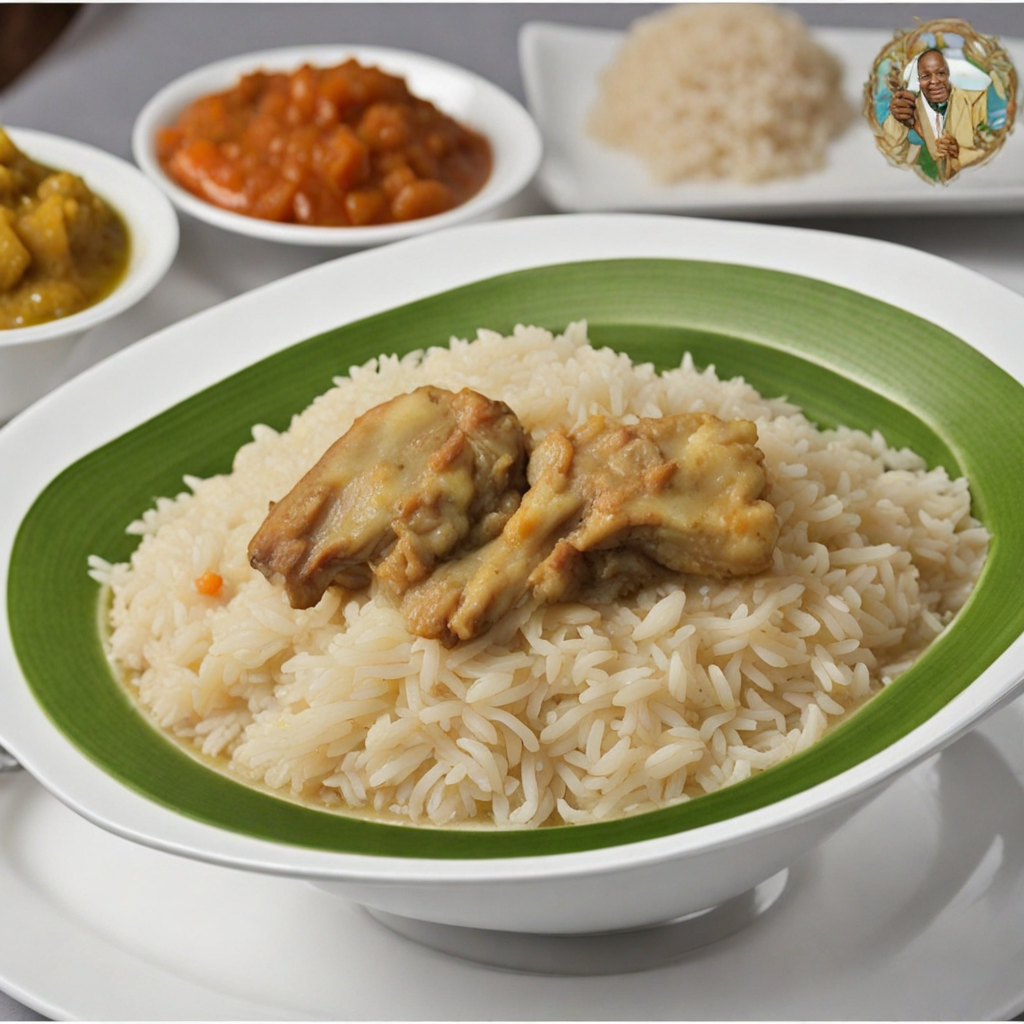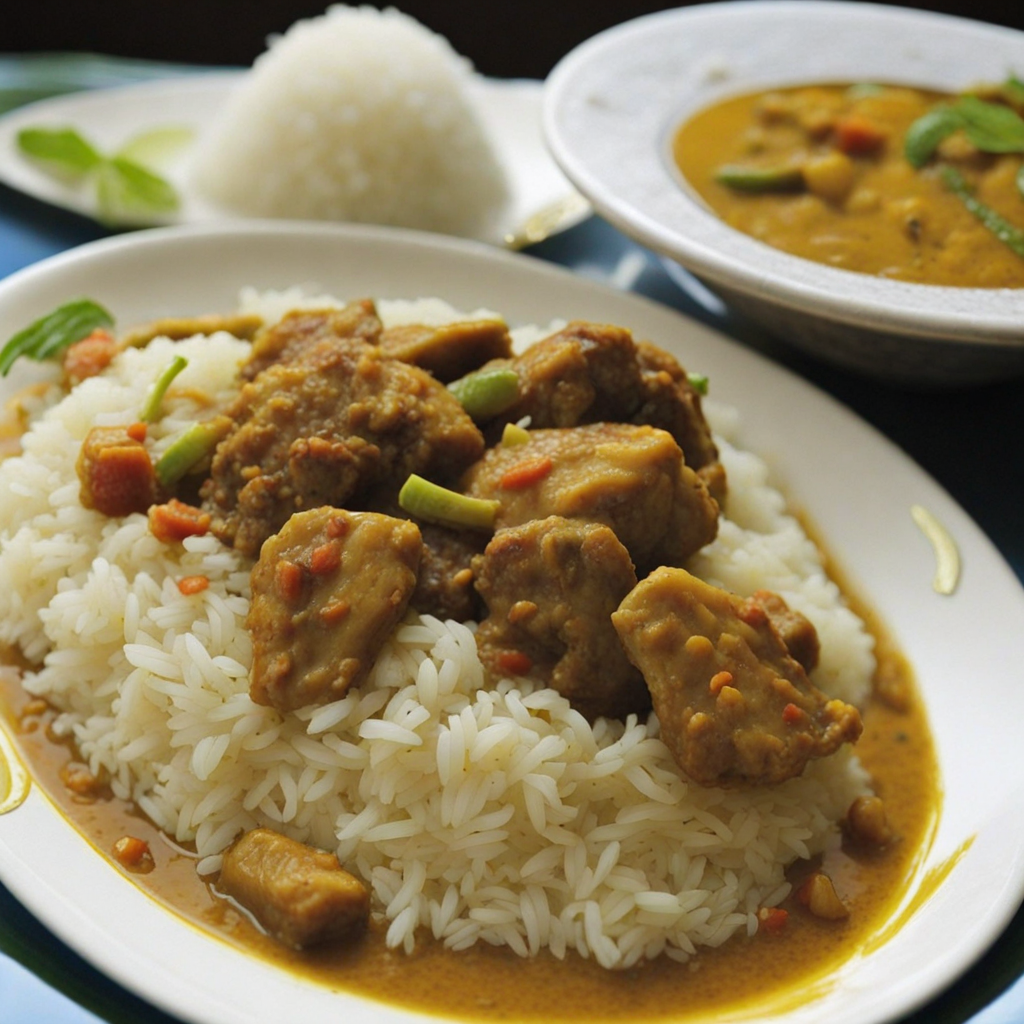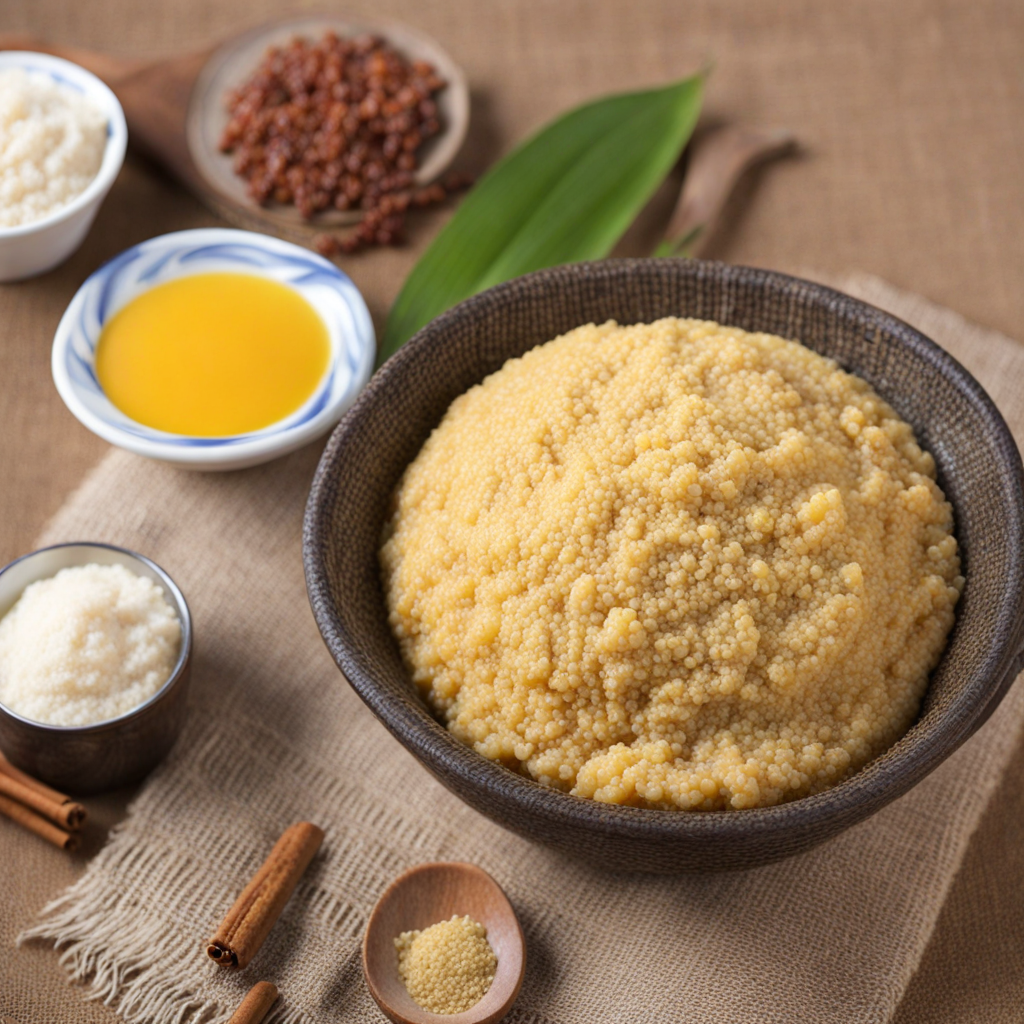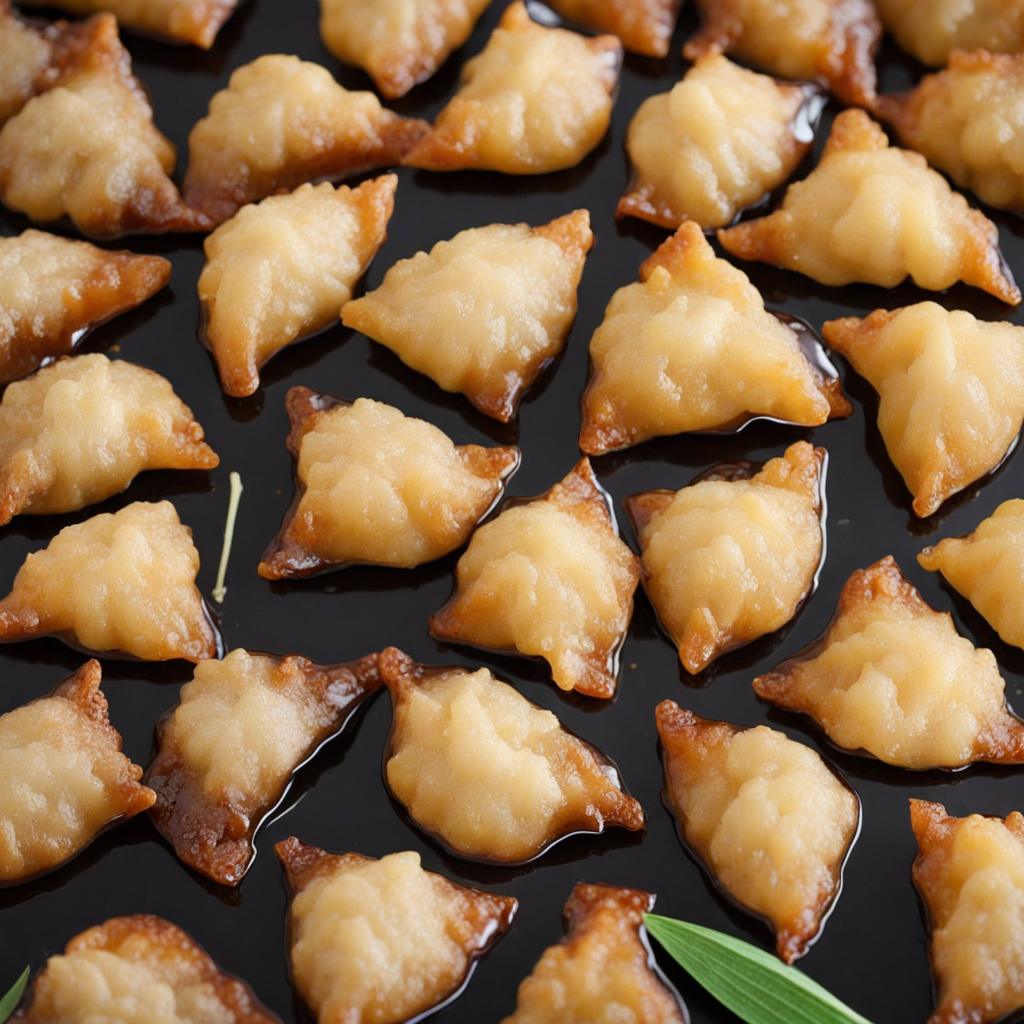Wali wa Nazi
Wali wa Nazi, a delightful Kenyan dish, is a fragrant coconut rice that embodies the essence of coastal cuisine. This dish is primarily made with long-grain rice, which is cooked in a rich mixture of coconut milk and water, infusing each grain with a creamy texture and a subtle sweetness. The use of fresh coconut milk not only enhances the flavor but also adds a unique, tropical aroma that transports you straight to the shores of the Indian Ocean. It's often seasoned with salt, and sometimes a hint of lime or lemon zest, giving it a refreshing finish that perfectly balances the richness of the coconut. The preparation of Wali wa Nazi is simple yet elegant, allowing the ingredients to shine. Once the rice is cooked to fluffy perfection, it is typically served alongside a variety of accompaniments, such as spicy seafood, grilled meats, or vegetable curries. The combination of the mildly sweet rice with spicy or savory dishes creates a harmonious blend of flavors, making it a versatile meal choice for any occasion. Often enjoyed during celebrations or family gatherings, Wali wa Nazi is a dish that brings people together, showcasing the warmth of Kenyan hospitality. In addition to its delicious taste, Wali wa Nazi is visually appealing, with its creamy white rice often garnished with fresh herbs or toasted coconut flakes. This dish not only provides a satisfying meal but also offers a glimpse into the rich cultural tapestry of Kenya's coastal communities. Whether you're enjoying it on the sandy beaches of Mombasa or at a family dinner, Wali wa Nazi is sure to leave a lasting impression, inviting you to explore more of the vibrant flavors of Kenyan cuisine.
How It Became This Dish
Origin of Wali wa Nazi Wali wa Nazi, a delightful coconut rice dish, traces its origins to the coastal regions of Kenya, particularly among the Swahili communities. The name itself translates to "rice with coconut," aptly describing the dish's primary ingredients. The Swahili people, with their rich history of trade and cultural exchange, were pivotal in the introduction of coconut as a staple food item in the region. The coconut palm, believed to have originated in the Indo-Pacific region, was brought to East Africa through maritime trade routes, establishing a foundation for this culinary creation. The preparation of Wali wa Nazi reflects the agricultural abundance of coastal Kenya, where rice and coconuts flourish due to the warm climate and fertile soils. Traditionally, the dish is made by cooking rice with coconut milk, which imparts a rich, creamy texture and a distinct sweetness. This method of cooking rice is not only a reflection of local ingredients but also an homage to the diverse influences that have shaped Swahili cuisine over the centuries, including Arab, Persian, and Indian culinary traditions. \n\n Cultural Significance Wali wa Nazi holds a significant place in the cultural fabric of Kenyan society, particularly during celebrations and festive occasions. It is often served at weddings, religious celebrations, and communal gatherings, where it embodies hospitality and togetherness. The dish is commonly paired with various accompaniments, such as spicy stews, grilled meats, or fried fish, creating a harmonious blend of flavors that reflect the diverse culinary landscape of Kenya's coastal regions. Coconut rice is not just a meal; it is a symbol of the Swahili way of life, which emphasizes community and shared experiences. The act of preparing and sharing Wali wa Nazi brings families and friends together, reinforcing social bonds and cultural identity. The dish is often prepared in large quantities, allowing for communal feasting, which is a vital aspect of Swahili culture. This communal aspect highlights the importance of food as a means of connection, transcending mere sustenance to become a medium for storytelling and cultural expression. \n\n Development Over Time As Kenya's culinary landscape evolved, Wali wa Nazi adapted to incorporate new influences and ingredients. The globalization of food culture, paired with the movement of people and ideas, has led to a fusion of flavors that enhances traditional recipes. Contemporary versions of Wali wa Nazi may include spices such as cardamom, cinnamon, or even saffron, reflecting the growing appreciation for diverse culinary experiences and the desire to innovate while honoring traditional roots. In urban areas, where access to various ingredients has expanded, chefs and home cooks alike have experimented with Wali wa Nazi, introducing variations that cater to different palates. For instance, some may choose to add vegetables, nuts, or dried fruits, creating a more complex dish that appeals to modern sensibilities. This evolution signals a broader trend in Kenyan cuisine, where traditional dishes are reimagined and celebrated in contemporary settings, ensuring that they remain relevant for future generations. \n\n Regional Variations While Wali wa Nazi is widely recognized across Kenya, regional variations exist that highlight the local culinary practices and ingredient availability. In coastal cities like Mombasa, the dish is often enriched with fresh seafood, such as prawns or tilapia, enhancing its flavor profile and aligning it with the region's maritime heritage. In contrast, inland variations may incorporate different types of rice or additional spices, showcasing the adaptability of the dish to local tastes and resources. These regional differences also reflect the broader diversity of the Kenyan population, which comprises over 40 ethnic groups, each with its unique culinary traditions. The ability of Wali wa Nazi to integrate local ingredients and flavors makes it a versatile dish that resonates with many communities, fostering a sense of unity through shared culinary heritage. \n\n Modern-Day Popularity In recent years, Wali wa Nazi has gained popularity beyond the borders of Kenya, capturing the attention of food enthusiasts and travelers seeking authentic culinary experiences. Its inclusion in restaurant menus, food festivals, and culinary events has helped elevate its status as a signature dish of Kenyan cuisine. As the global appetite for diverse flavors continues to grow, Wali wa Nazi serves as a representative of the rich tapestry of East African culinary traditions. Social media has played a significant role in this resurgence, with food bloggers and influencers showcasing the dish's preparation and presentation. This visibility has encouraged a new generation of cooks to explore traditional recipes and share their interpretations, ensuring that the legacy of Wali wa Nazi endures. The dish not only satisfies hunger but also tells a story—one of cultural exchange, familial bonds, and the enduring importance of food in shaping identity. \n\n Conclusion Wali wa Nazi exemplifies the intricate relationship between food, culture, and history. Its origins among the Swahili people, cultural significance during communal gatherings, and adaptability over time highlight the resilience and creativity of Kenyan cuisine. As Wali wa Nazi continues to evolve, it remains a testament to the power of food as a unifying force, bridging the past and present while celebrating the vibrant culinary heritage of Kenya's coastal regions. Through this beloved dish, generations will continue to connect, share, and savor the flavors of their rich cultural legacy.
You may like
Discover local flavors from Kenya






